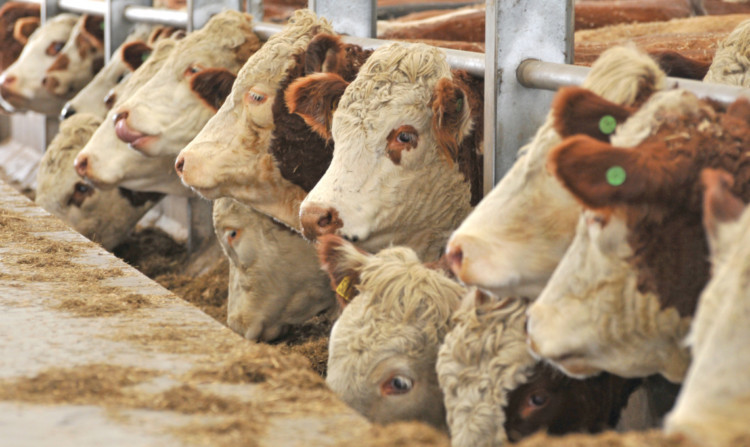There was never going to be any escaping the effects of last year’s dreadful weather, a fact confirmed by the latest edition of Quality Meat Scotland’s Cattle and Sheep Enterprise Profitability report.
A close analysis of 248 different cattle and sheep enterprises, the report reveals an industry that has taken a knock during 2012 but one that has nonetheless shown remarkable resilience.
Stuart Ashworth, QMS head of economics services, believes although there are still legacy issues from the bad weather, there are some “green shoots” of recovery to be seen including an arrest in the decline of cattle numbers, with indications that more female cattle are now being retained on farms.
Ewe numbers had been just beginning to increase before the bad weather but associated problems including fluke had hit confidence. It would take the industry time to recover and much depended on open weather over the coming months.
Mr Ashworth’s annual survey is of some significance in that it looks forensically at actual enterprises over the course of a production cycle.
In this case it is the 2012 calf and lamb crop that is under the microscope. Wisely he excludes Single Farm Payment (SFP) and Less Favoured Area Support Scheme (LFASS) income from the costings.
Only the production-linked Scottish Beef Calf Scheme is included. By taking this approach he can strip bare the actual underlying profitablility or lack of it for various enterprises.
Essentially this approach exposes the reliance that still exists for subsidy.
For example hill lambs cost 251 pence per kg (ppk) to produce in 2012 but only fetched 166 ppk on the market.
Lambs from upland ewe flocks fared better with a production cost of 196ppk and a sale cost of 181 ppk.
It is still however a negative margin.
Mr Ashworth has taken into account all costs including replacement stock, variable costs, labour, rent and cost of working capital.
That is not to say however that all sheep enterprises in these groups lose money before subsidy.
Many of the hill flocks in the top third for financial performance did achieve positive margins thanks to a net output £20 per ewe better than the average.
The key to getting the best from this 65-page QMS report is not headline figures but rather using the detailed costings for benchmarking.
There are remarkable gains to be made from matching the top third across all sectors. The cattle sector continues to be difficult with only 22% of suckler heads making a positive margin before subsidy.
This is down from 30% a year earlier showing how difficult it is to build confidence in the sector.
Store cattle finishers fared better with 59% reporting a positive margin. Despite the increased costs of feed those using cereal-based finishing systems did better with 80% showing a positive net margin.
Suckler beef production remains challenging however with the average cost of producing a kilo of upland reared suckled calves given as 340p with a sale price of 207p proving that there is a mountain to climb before profit can come solely from the market.
But the news is not all bad.
“Across some of the cattle enterprise types those in the top third reported higher margins in 2012 than those in the top third in 2011 even although the average margin fell in all cases,” said Mr Ashworth.
Copies of Cattle and Sheep Enterprise Profitability in Scotland 2013 will be available at the QMS stand at Agriscot tomorrow or can be requested by calling QMS on 0131 4724040.
